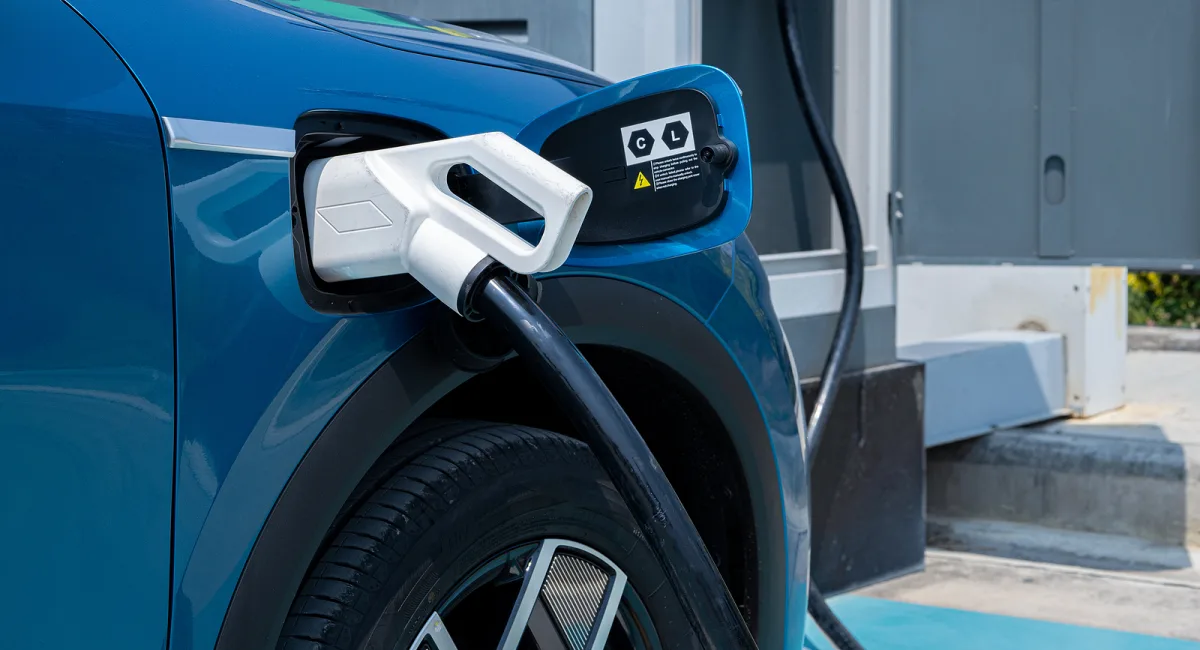The popularity of electric vehicles has soared in recent times. Sales in the European Union increased 71 per cent in May 2023 and new car registrations grew for the tenth consecutive month, rising 18.5 per cent.
For Jens Hörning, Partner, CEE Automotive Industry Leader at PwC, this shift towards e-mobility is a global trend driven by consumer demands, regulation and government policies, and in the response of car manufacturers to them.
“There has been a clear focus globally in recent years on the transformation of the automotive industry, and a large proportion of the discussion focuses on e-mobility, specifically battery-driven e-mobility,” he tells Emerging Europe.
Battery-driven cars are obviously a huge part in this transformation, and Europe is now the leading global market in terms of eReadiness, based on PwC data on charging outlook.
“There must, however, also be a wider discussion,” says Hörning. “E-mobility itself will not transform the automotive industry. It is also about a change in mobility demands and related innovations. This obviously includes electric vehicles, but also the likes of connectivity, charging infrastructure, autonomous driving, public transport, sharing models and more.”
One big driver of the shift to electric vehicles is the European Green Deal, Hörning believes.
“This commits all EU countries to reduce CO2 emissions by at least 55 per cent by 2030, and achieve climate neutrality by 2050. The Fit for 55 package increases CO2 emissions targets to 100 per cent by 2035 for all new cars and vans. In order to get close to these targets, car manufacturers invest heavily in climate focused technologies.”
Central Europe’s role
For the first time, a CEE country, Poland, has been included in the forthcoming new edition of the PwC eReadiness study, to be released in September 2023. Hörning says that Poland’s inclusion is significant, not just for Poland but also for other countries in the region.
“While only Poland is included in the upcoming report, preliminary findings point to trends that are, to a large extent, representative of what is happening economically in the Czech Republic, Romania, Hungary and Slovakia,” he says.
“It is important to note that if we look at the ‘C’ in CEE, the countries I just mentioned are hugely important in terms of automotive manufacturing. There are huge growth projections for manufacturing and ultimately sales. PwC’s EV charging market outlook, for instance, forecasts that by 2035, BEVs will have a 90 per cent market share of new car registrations in Europe.
“PwC automotive research also forecasts that by 2030, sales of BEVs will constitute 46 per cent of the market in Poland, the Czech Republic, Hungary, Romania and Slovakia. While this represents a huge leap from the two per cent of the market recorded in 2022, and is lower than the Europe-wide projections, across these countries there is clearly a transformation already underway in the automotive sector.”
Infrastructure challenges
BEV sales are forecast to increase in CEE despite infrastructure challenges. Hörning says that
there are a lot of initiatives already underway across the region aimed at addressing low charging station coverage. In the Czech Republic, for instance, Škoda Auto has recently signed a memorandum of cooperation with Orlen Unipetrol to develop fast charging infrastructure for electric vehicles across the country.
“The region’s status as a manufacturing hub will be a key driver of improving charging capability,” says Hörning.
“There are many instances of investment in manufacturing infrastructure like fast charging stations for electric cars, and in the manufacture of BEVs themselves. Two recent examples from Slovakia are US investment in electric car charging stations and Volvo’s investment into a new 100 per cent climate neutral and electric cars only manufacturing plant in Košice.
“That said, some huge challenges remain to get the charging network up to speed in CEE. While the network is expanding, there is scope for more coordinated work from government at different levels, the manufacturing industries, the energy sector and other stakeholders to streamline work in this area.”
Electrifying truck fleets
When it comes to the electrification of the heavy-duty vehicle sector in CEE, there are also challenges, but Hörning views the great progress that has been made in electric light cars as in some ways instructive for the heavy-duty sector.
“To some extent, it seems a matter of time before the heavy-duty vehicle (HDV) sector catches up,” he suggests.
“It is not an easy task, however, to electrify the truck fleet. The first challenge is the scale of the industry. For instance, 20 per cent of Europe’s entire HDV fleet is Polish, up to 30 per cent of all mass goods in Europe are transported by Polish operators. CEE is also a very important logistics hub which has obvious implications for emissions. Electrification means ramping up grid capacity, which is currently somewhat inflexible and overburdened, across CEE.
“In many ways, the main challenge is getting tech solutions for the logistics sector. To a large extent, public transport is showing these sectors the way, with huge strides having been made in recent years in tackling emissions in the region. In Poland, for instance, the number of electric buses passed an important threshold in 2022, outnumbering diesel vehicles for the first time, and this transformation will continue.”
Bringing down the cost
Acquisition cost, limited range, and recharging time are usually identified as the top three blockers to purchase a BEV. Hörning admits that upfront cost is a big issue for new BEV models.
“PwC research shows that Internal Combustion Engine Vehicles (ICE) models from the same brand are typically 11–29 per cent more expensive in Germany than in Poland. On the contrary, BEV models in Germany are typically cheaper or at least on a par with Polish prices,” he says.
“Government subsidies also have a key impact in reducing prices, and all EU countries have some kind of subsidy programme in place. In the CEE context, the Romanian government’s 10,000 euros subsidy to new buyers directly impacted the sale of electric cars, which increased 50 per cent in 2022 compared to the previous year.
“BEVs and hybrid cars made up more than 20 per cent of new cars sold inRomania in the first month of 2023. This clearly shows the effect subsidies can have on increasing BEV ownership. As well as Romania, Poland, the Czech Republic, Hungary, and Slovakia also have various significant EV purchase incentives and tax exemptions in place, as well as charging infrastructure and sustainable transport investment programmes.”
Overall, suggests Hörning, stakeholders in the automotive and energy industries have to work together to build on the progress in improving the charging network.
“PwC research shows us private ‘slow’ charging from an installed base is most prominent as consumers prefer to charge at home/work where their vehicle is stationary for longer. However, public ‘fast’ charging will become more important—important in broadening appeal and widening the demographic of BEV ownership—and lowering user ‘range anxiety’.”
Develop an aftermarket
With rising emissions in CEE and ageing cars compared to Western Europe key challenges for the region, Hörning suggests developing an aftermarket to address these issues.
“For a long time there has been a pattern in which used cars have made their way to CEE from Western Europe. While there is growing interest in electric cars in the CEE region, we know from recent PwC research that initial cost is a key barrier to ownership,” he says.
“Electric cars are continuously developing in terms of quality and more advanced technology bringing better models to the market. In first mover BEV adoption markets like Norway, analysis shows a clear increase in used car sales activities. There is also evidence that shows car owners in this market typically change to a BEV earlier than they normally would have bought a new car. The development of an aftermarket, therefore, can help find a way both to move on the surplus in Western countries and replace ageing diesel cars especially with electric models. There is an opportunity for the aftermarket to democratise BEV ownership.”
Some 55 per cent of customers recently surveyed in Western Europe expressed an interest in buying a BEV in the next year. Currently, figures for CEE are thin on the ground, “but Poland’s inclusion in the next eReadiness survey should give us some indicative numbers,” says Hörning.
“And the Polish market is quite similar in terms of demand and economy to other nearby countries in the region. In terms of interest, in CEE there is a lot of evidence that interest in sustainability and in greener motoring has been growing. One of the factors of this is the region’s status as an automotive manufacturing hub.”
OEMs (original equipment manufacturers) and car manufacturing, including supply chains, is an important backbone of the Polish, Czech, Hungarian, Romanian and Slovak economies.
“This region has a reputation for excellence, demonstrated by Ford’s location of an all-electric car factory, due to open next year, in Craiova, Romania and the announcement from Volkswagen Slovakia that the new future all-electric SUV Porsche Cayenne will be wholly manufactured at their Bratislava plant, as well as Volvo’s aforementioned new all-electric plant in Košice. The point here is that the region’s status as an automotive hub helps in raising awareness and interest in e-mobility,” says Hörning.
“Also important is that BEVs have made huge progress in quality. Just a few years ago it was perhaps a choice between a Tesla or another model that might not have been seen as attractive. This is changing, with attractive models, higher performance, more choice, lower prices and a maturing aftermarket all raising interest.”







